The United States spends more than it produces and pays for the difference with debt. This causes inflation. Historically, countries take on debt to fight wars and sometimes to ease the effects of a recession. Today, as a nation, we seem addicted to debt in bad times and good. The US debt in 1974 was $475B. Today it is $34,000B, an increase of 71.6 times even though the population has only gone up by 60% in the last 50 years. Thus, the debt per capita has gone up by roughly 45x. The government prints money to pay the debt and thus the money supply per capita has gone up by a factor of roughly 16x and this liquidity floods the system. From the government’s perspective, why not borrow if you can just print money to pay it back? Especially as the world’s reserve currency and besides, everyone else is doing the same. Intuitively, this would seem like a crazy thing to do but at times it is not clear what the negative side effects are. Everything is going along just fine, or is it? Below we delve deeper into the dynamics.
Classically, if a country prints a lot of money, the value of that money goes down. This is called debasement and started in antediluvian times with governments shaving coins or mixing in baser metals into gold coins. Our currency is no longer based on gold, it is a so-called fiat currency, so the debasement happens in other ways. For years I did not have a basic understanding of this since I was looking at inflation and the amount of money printing seemed to significantly exceed the amount of inflation I was seeing.The disconnect is that I was missing what was happening to assets.
To understand this, one needs to separately look at two types of things that one spends money on: assets and consumables. They are related, but not exactly the same. Consumables are things like bread, a haircut, gas, milk, and smartphones. Assets are things like gold, stocks, bonds, land, and maybe a college education. Both poor and rich spend money on consumption, but the poor spend a much higher percentage of their money on consumables. Rich people have assets. When we talk about the money it takes to buy services and stuff, we talk about inflation for consumables and debasement for assets. Consumables are largely what is tracked in the consumer price index (CPI). Here we see the CPI-U, the consumer price index for urban dwellers. Everything below will be based on a 50-year interval, the period since I graduated college.

It is worthwhile to compare the CPI with parameters such as average salary or minimum wage. As you can see in the next chart, over the last 50 years, consumables have gotten more expensive than have salaries have improved which is why many in the country feel squeezed. CPI has increased by 22% in the last four years and we all feel it.
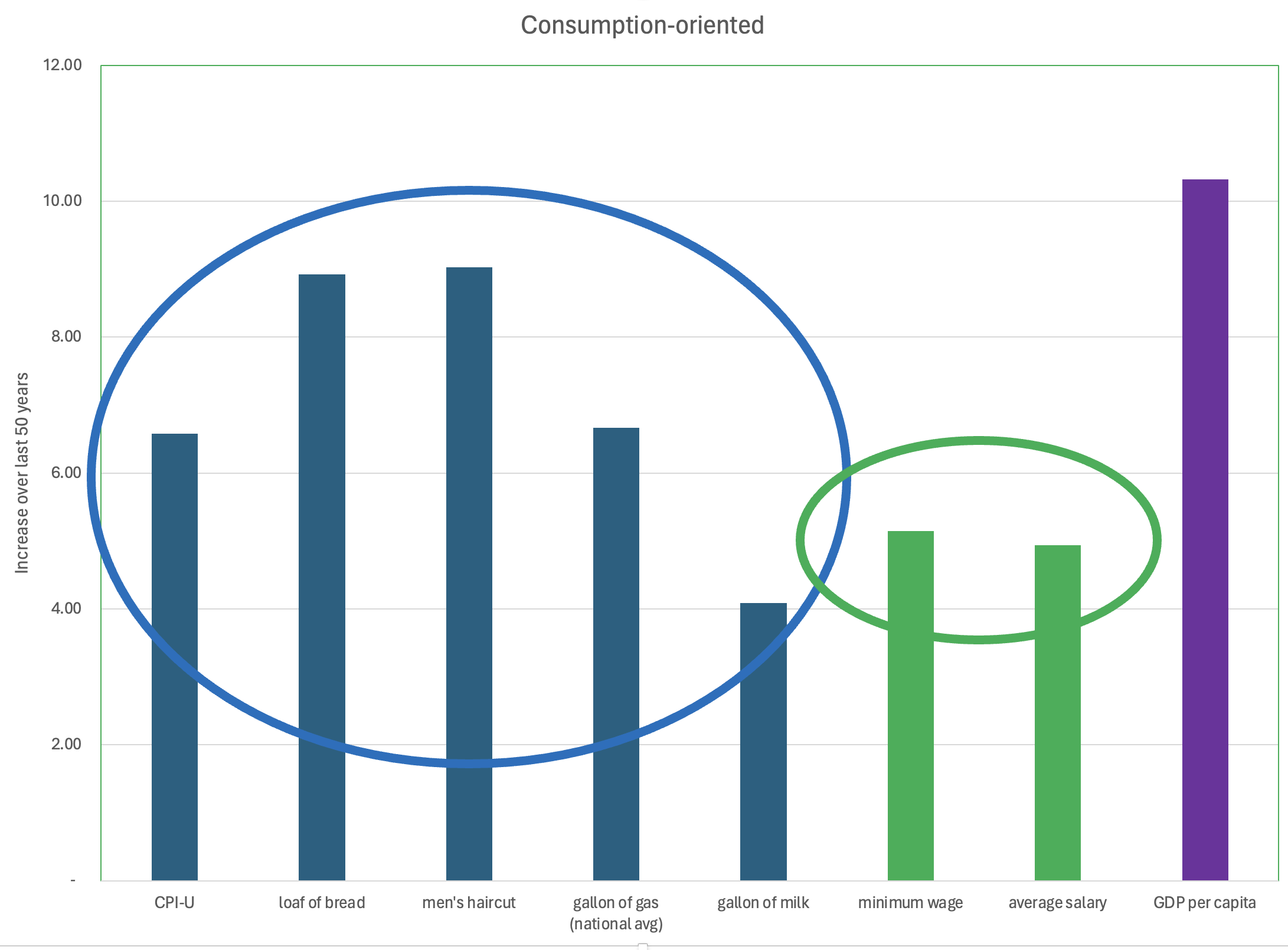
These data are of course somewhat limited. The government “adjusts” the CPI continuously (they don’t want to show inflation getting higher), a gallon of gas costs a lot more than the national average in California, and some items, such as smart phone didn’t exist 50 years ago. But you get the idea. If you are living paycheck to paycheck, things have gotten worse a little worse, on average, every year despite the fact that we have globalized manufacturing and a lot of what people consume is made overseas (which has put pressure on wages here).
The picture is vastly different for assets, as seen in the next chart. Note the difference in scales. If consumables have gotten, using round number, 50% more expensive, assets have gone up 400% or more when compared with the average salary.
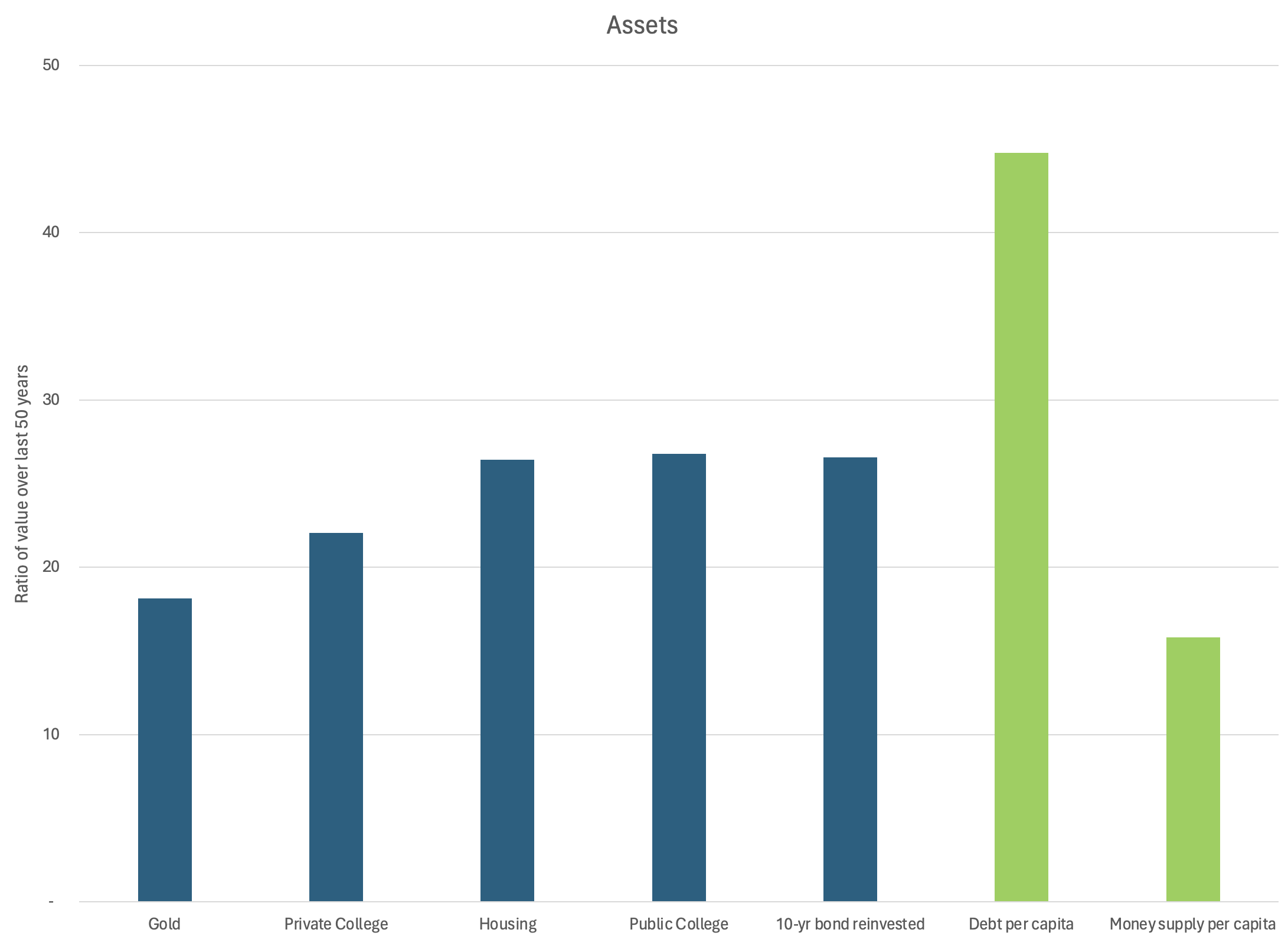
Look at was happened to the money supply, that is, the money the government has “printed.” This chart does not include other assets such as art. The total value of the top 10 auctioned paintings in 2023 was $660M. Pablo Picasso’s “Femme à la montre,” was sold for $139 million in 2023. See [ref]. The ratio of the prices of the most expensive painting sold 50 years ago to now is 1100 and for the second most expensive painting, 850. These ratios are off the chart. Note, of course, that these are not the same paintings being sold 50 years ago and now. We do not have those data. For bonds, I used 10-year Treasuries reinvested every ten years. Note that if one adds bitcoin and other cryptocurrencies, the modern alternative to gold, to gold, the ratio gets to 21, bringing it closer to the other assets.
The housing data were derived from an informal survey of my friends, mostly on the East and West coasts. See chart below.
Is a college education an asset? I think so. Data on college costs can be found here

And, as with smartphones, there are assets that didn’t even exist 50 years ago, such as the crypto currencies Bitcoin and Ether. Gold would probably be higher if not for these alternative currencies.
Note that the S&P500 is somewhat different because, unlike a bar of gold, it is a productive asset. It has gone up about 180 times including dividend reinvestment and has beaten asset-related debasement. [ref] The market cap of all stocks has reached 200% of GDP, showing in a different way the financialization of the economy.
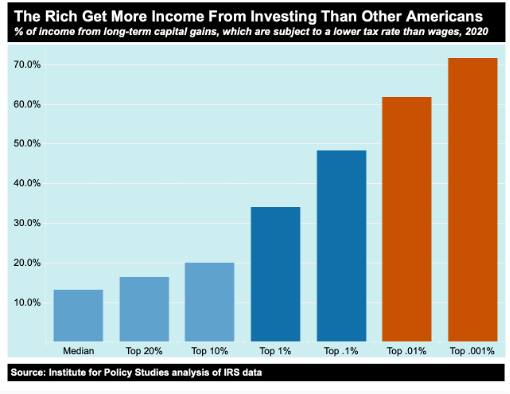
Putting everything on the same chart, we can see the dramatic difference in what has happened with consumables (in blue) and what has happened with assets (in red) and what has happened to salaries (in green).
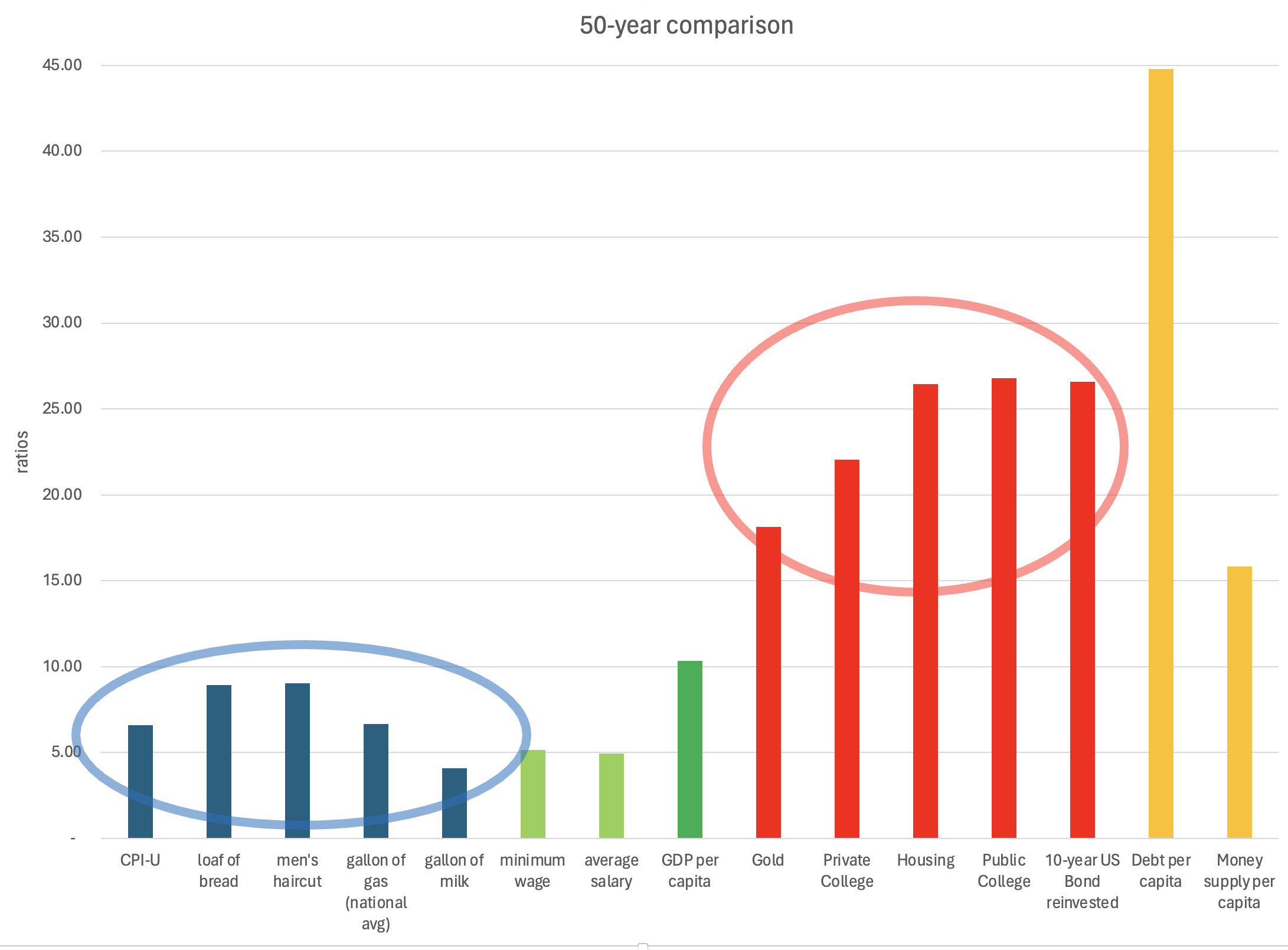
What we see from this analysis is that the financial economy is, of course, the economy of the rich. The government spends money it does not have, prints more money to pay its bills, and that money flows to the rich. The rich use that money to buy assets, driving up their price. Most people think, “Great, my assets are getting more valuable!”
But, of course, the assets are generally not improving—it is the same painting or the same gold bar—what is happening is that your money is getting less valuable. It is being debased. It is the assets that are staying the same, your money is decaying.
The poor are worse off because the price of consumables that they can buy with their dollars have gone up faster than their salaries, hence, for instance, two parents need to work instead of one.
But what has devastated them is that their ability to accumulate assets (i.e., their ability to make money while they sleep) has gotten completely out of reach. If you cannot accumulate assets, how does one make it to the middle class or above? Billionaire investor Warren Buffett famously said, “If you don’t find a way to make money while you sleep, you will work until you die.” You need assets to make money while you sleep.
If you do have money that you hope to buy assets with, it is continuously losing asset-buying value. You can put it in Treasuries, and it kind of keeps up, but if you leave it in cash, you lose.
Will the government stop spending beyond its income? Why would it? The alternative would be to raise taxes. Will it run out of people willing to buy its debt? Solved that too, it buys its own debt through the Federal Reserve Bank.
The wealthy in the US are getting richer. Recent data shows that the top 1% of American earners now own more wealth than the entire middle class, with more than one-quarter of all household wealth belonging to the super-rich. Look at their superyachts, 2021, [https://www.luxhabitat.ae/the-journal/top-10-most-expensive-yachts-in-the-world/]. Over the years, the rich have steadily grown richer, with the top 1% overtaking the middle class in collective wealth in late 2020 and continuing to increase their margin. Factors contributing to this wealth accumulation include real estate, stocks, and owning private businesses, with the top 1% controlling a significant portion of these assets. The top 136,000 households have $20,000B in wealth.
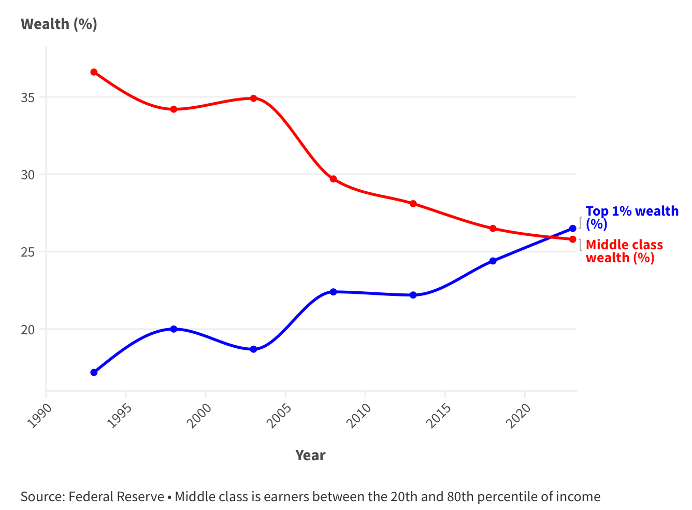
You can see below how unusual my start point, 1974, is for this analysis, but I start it there because that is when I graduated college.
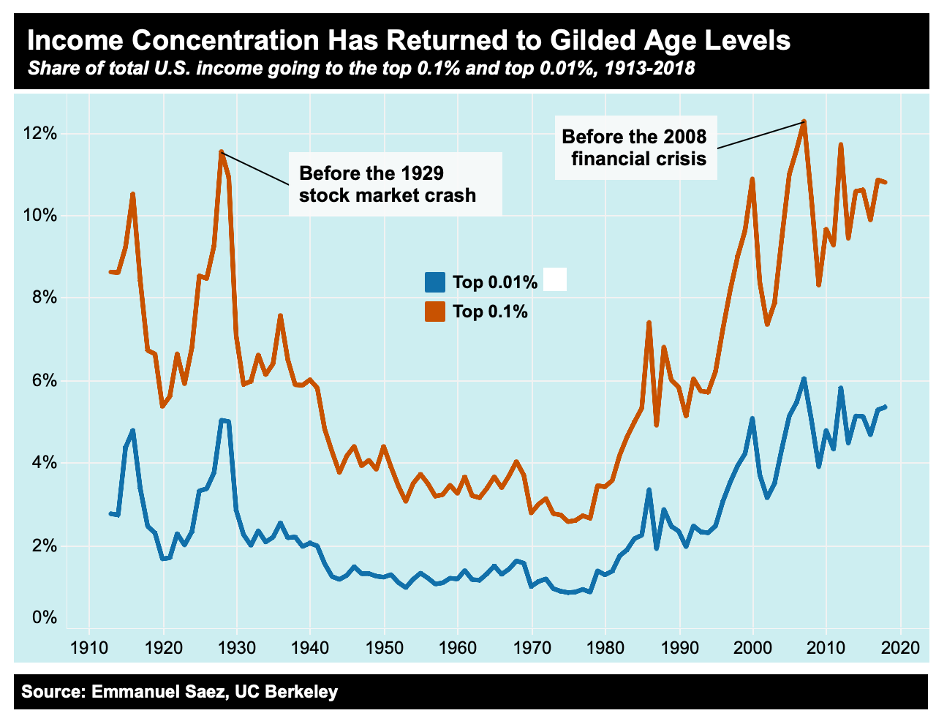
Finally, let me emphasize that I don’t believe that government debt is the only cause of wealth inequality (e.g., high-growth innovative businesses that build on Metcalfe’s law, tax policy, etc.) or currency debasement, nor that wealth concentration is the only cause of asset inflation. The points that I am trying to make are:
- Assets have been inflating significantly faster than consumables.
- It gets more difficult every year for young people to break into the financial club where they are making money while they sleep.
- If you are watching your assets, such as gold or your house, increase in value it is not an unbridled reason to celebrate, “I am making a ton of money in gold.” What is happening is that the asset is the asset, it is your money that is becoming less valuable, except as you convert it to consumables. Our government’s printing of money does, after all, have a “cost.”
Other references:
